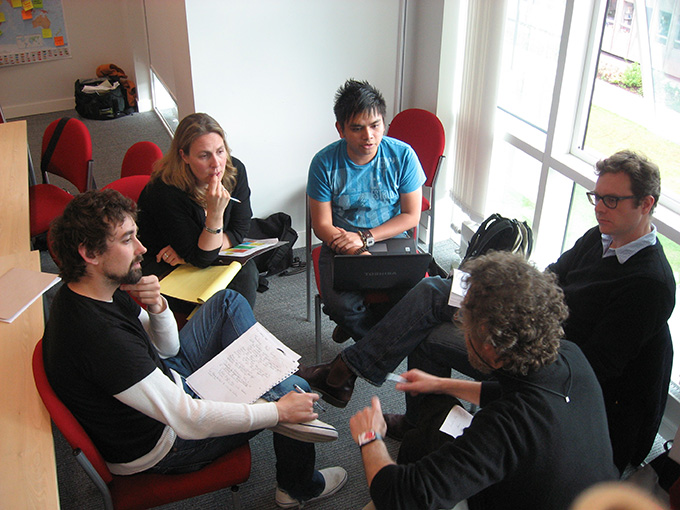
There’s a lot written about the benefits of academic writing groups, writing rooms and writing retreats. But not so much about academic reading groups. And yet, they can be just as beneficial.
Being in a reading group puts you in the company of others working with texts. It takes you away from reading as a solitary occupation. The people in an academic reading group will be, like you, interested in texts as resources for making meaning, for thinking/being scholar, and for writing. The texts your group reads together can provide reasons to write, directions for research and intellectual support and challenge.
Reading groups provide a forum through which members talk their way into and around scholarly thinking. Working together, readers can share information and help each other to find focus in their reading – here’s a few examples. Reading group members:
- bring a variety of previous readings to a particular text and figure out together how these are relevant. Because group members are all likely to have been reading material related to their own research, they will bring different literatures to the group. Through locating the various relationships with the diverse body of texts, reading group members grow an ever stronger sense of disciplinary communities and conversations. Members see the very many interesting ways in which inter-textual connections enrich scholarly work.
- become familiar with discipline specific terminology. Every discipline has their own lexicon, particular terms that are used within a specific area of study in distinctive ways. Such terms are often shorthand for a lot of “stuff” that is generally understood by members of that scholarly community. When disciplinary community readers encounter one of these terms (known as indexical expressions by linguists) they can fill in the necessary background information. (Think of all of the background information and experiences we now bring to the term lockdown.) And here’s where a reading group comes into its own. It is generally impossible for a writer to provide a reader new to the area with an adequate explanation of all of the insider disciplinary terms that they use, but a reading group can help newcomers get to grips with these shared understandings.
- engage with various interpretations. It is almost inevitable that readers in a reading group will see different things in a text. These differences can spark lively discussion, as those offering their interpretations have to explain why they responded in a particular way. Such discussion is a great rehearsal for literature work more generally. But it also brings home to group members the reality that texts do not have fixed meanings – interpretation is always framed by who you are, where you are, and what you’ve read and experienced before. In the reading group it’s usually a case of vive la productive difference/differance.
- apply the reading to their own and other’s research and/or professional or policy contexts and/or life experiences. Academic texts usually make at least one big point, the contribution, as well as a number of smaller associated points. Any of these points might resonate with, or have implications for, the way in which readers think about situations, events, positions, narratives, truths etc. outside the text. Reading group members can support each other in making these external links. And it is through sharing these insights that reading groups can become the stimulus for creative new associations, and sometimes new collaborative projects.
- consider the writing genre and its crafting including audience, argument and contribution. Reading groups may or may not focus on the actual writing of the texts they share. However, they can. It is helpful for academic readers in particular to examine, at least sometimes, the ways in which writers present the warrant for their work, structure their argument, guide the reader through the text and make their claims. Sharing insights about writing helps all group members to build their repertoire of diagnostic and creative strategies.
- build a critical, evaluative and appreciative stance towards text. Reading groups can set themselves an agenda. They might agree an order of events – first of all ensure that everyone understands the text, create space for various interpretations, and then get to various evaluations of the text. If the group evaluation begins by considering what the text does, as opposed to what it doesn’t do, then readers are positioned to consider what else the writer could have done. How might they have strengthened the text? Taking an appreciative stance can generate critical perspectives.
Reading groups can do more than simply hold members to account for reading the set text, and ensuring that everyone knows how to pronounce difficult terms out loud. These are useful, but clearly not all that is going on, and can go on, as the list above suggests. Reading groups are essentially talking, yes, talking as a scaffold to understanding, but also more.
Reading groups are a place where members can learn and practice the kinds of conversations that are the basis of scholarly consensus and generative disagreements. And such conversations are the way in which we sustain our communal cultivation of knowledges, the practices of knowing and ourselves as knowers.